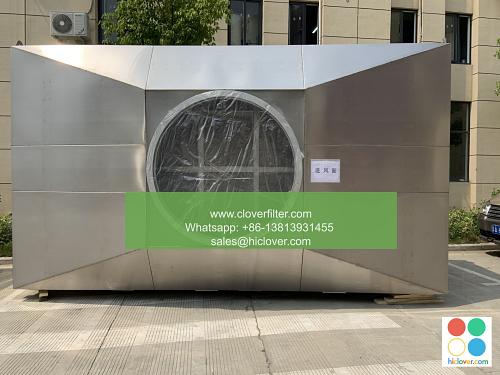The Benefits of Energy-Efficient Air Filters for Industrial Applications

Energy-efficient air filters are a crucial component in industrial applications, providing numerous benefits that can enhance overall system performance, reduce costs, and minimize environmental impact. In this article, we will explore the advantages of energy-efficient air filters in various industrial settings, including heating, ventilation, and air conditioning (HVAC) systems, air pollution control systems, and industrial process ventilation systems.
Improved Indoor Air Quality (IAQ) and Reduced Energy Consumption
Energy-efficient air filters are designed to capture airborne contaminants, such as particulate matter (PM), gases, and vapors, while minimizing the amount of energy required to operate. By using high-efficiency air filters, industrial facilities can improve indoor air quality (IAQ) and reduce the risk of respiratory problems and other health issues associated with poor air quality. Additionally, energy-efficient air filters can help reduce energy consumption by minimizing the pressure drop across the filter, which can lead to significant cost savings over time.
Extended Filter Life and Reduced Maintenance Costs
Energy-efficient air filters are designed to last longer than traditional filters, reducing the need for frequent replacements and minimizing maintenance costs. This is achieved through the use of advanced filter media, such as nanofiber filters and electrostatic filters, which are designed to capture a wide range of airborne contaminants while maintaining a low pressure drop. By extending filter life and reducing maintenance costs, industrial facilities can minimize downtime and optimize system performance.
Applications in HVAC Systems, Air Pollution Control Systems, and Industrial Process Ventilation Systems
Energy-efficient air filters have a wide range of applications in industrial settings, including:
* HVAC systems: Energy-efficient air filters can be used to improve IAQ and reduce energy consumption in HVAC systems, which are commonly used in industrial facilities to control temperature and humidity.
* Air pollution control systems: Energy-efficient air filters can be used to capture airborne pollutants, such as particulate matter (PM) and gases, in air pollution control systems, which are designed to minimize the environmental impact of industrial operations.
* Industrial process ventilation systems: Energy-efficient air filters can be used to capture airborne contaminants, such as dust and fumes, in industrial process ventilation systems, which are designed to provide a safe and healthy working environment for industrial personnel.
Key Technologies and Trends in Energy-Efficient Air Filtration
Several key technologies and trends are driving the development of energy-efficient air filters, including:
* Nanofiber filters: Nanofiber filters are designed to capture a wide range of airborne contaminants, including particulate matter (PM) and gases, while maintaining a low pressure drop.
* Electrostatic filters: Electrostatic filters are designed to capture airborne contaminants, such as dust and pollen, using electrostatic charges.
* MEMS (Micro-Electro-Mechanical Systems) technology: MEMS technology is being used to develop advanced air filter systems that can detect and respond to changes in air quality in real-time.
Conclusion
In conclusion, energy-efficient air filters are a crucial component in industrial applications, providing numerous benefits that can enhance overall system performance, reduce costs, and minimize environmental impact. By understanding the benefits and applications of energy-efficient air filters, industrial facilities can optimize system performance, improve IAQ, and reduce energy consumption. As technology continues to evolve, we can expect to see even more innovative solutions in the field of energy-efficient air filtration, driving greater efficiency, productivity, and sustainability in industrial applications. Prompt

